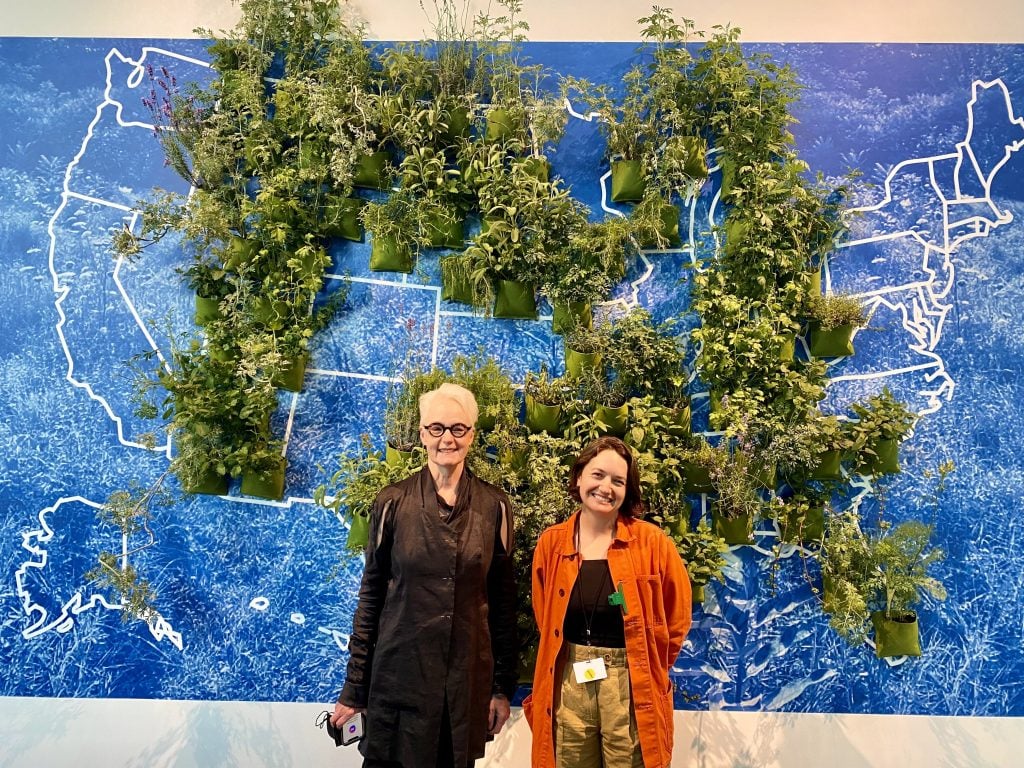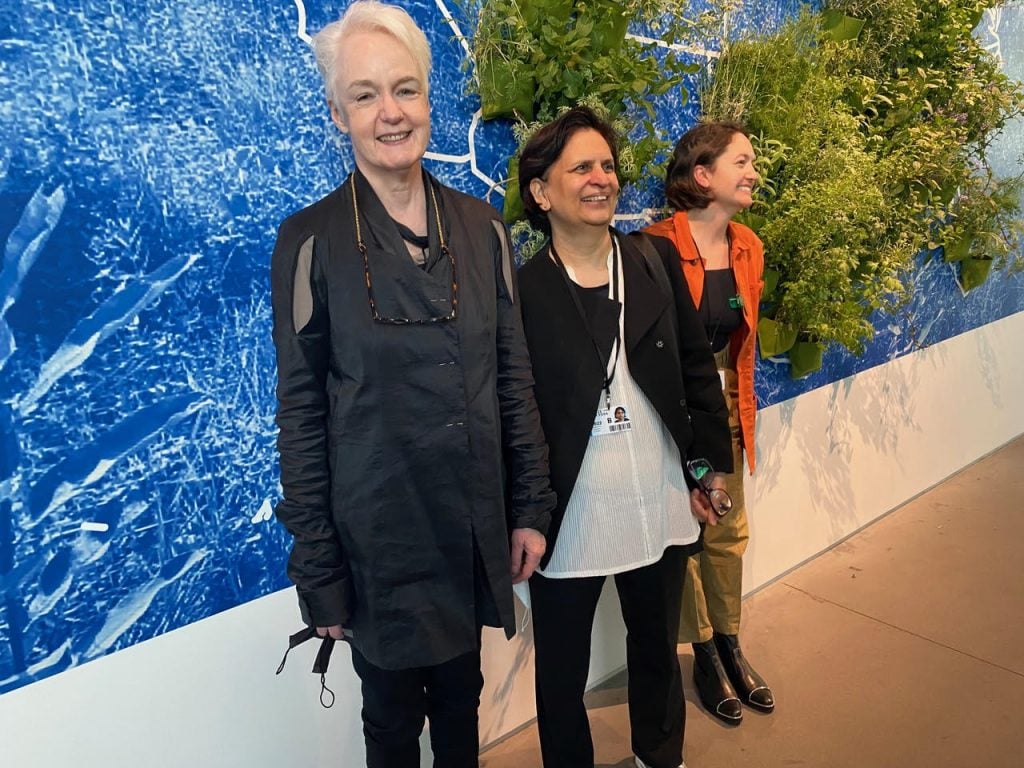Art Fairs
At Frieze, a 45-Foot Herb Garden Is an Unlikely, and Highly Effective, Visualization of the Threat to Women’s Reproductive Rights
The garden maps the states with the strictest anti-choice laws.

The garden maps the states with the strictest anti-choice laws.

Sarah Cascone

A leafy green bank of herbs hangs on a wall at Frieze New York. The work, titled Trigger Planting, is by the art collective How to Perform an Abortion, and is intended as a stark reminder of the Supreme Court’s likely plan to overturn Roe v. Wade and roll back women’s reproductive rights.
All of the plants in the site-specific display have traditionally been used for contraception and abortion. The collective planted them on a map of the U.S., over each of the 26 states where so-called trigger laws will immediately ban abortion once Roe v. Wade, which legalized the procedure, is overturned.
Realizing just how much green covers the installation is a terrifyingly effective visual of just how restricted women’s access to abortion stands to become.
“It’s really overwhelming and scary,” artist and collective member Maureen Connor told Artnet News at the fair’s VIP preview. “At this point, I feel we have to say when Roe gets overturned, not if.”

How to Perform an Abortion, Trigger Planting (2022). Courtesy of the artists and A.I.R. Gallery.
“I was around before Roe v. Wade, and I had a number of friends who had illegal abortions,” she said. “I kind of feel like what we’re going to see now is going to be a lot worse than what it was like back then.”
Connor cofounded the group in 2017 with Eugenia Manwelyan, who is no longer involved. The other current members are architect Kadambari Baxi and visual artist and gardener Landon Newton.
Since its inception, How to Perform an Abortion has investigated the little-known history of herbal abortifacients, which have been used for thousands of years (and some documentation goes back to 2,000 B.C.E., in ancient Egypt). Its projects have included planting reproductive justice gardens at the Richard and Dolly Maass Gallery at SUNY Purchase’s School of Art and Design, at Antenna Works in New Orleans, and in Liberty, New York, with the School of Apocalypse.

Maureen Connor, Kadambari Baxi, and Landon Newton of How to Perform an Abortion with the collective’s piece Trigger Planting presented by A.I.R. Gallery at Frieze New York. Photo courtesy of the artists.
The Frieze project, which measures 45 by 19 feet, is being presented by A.I.R. Gallery, one of four New York art nonprofits being honored at this year’s fair. Founded in 1972, A.I.R. was the first all-female artist cooperative gallery in the U.S., and it has been outspoken in its support of abortion rights.
How to Perform an Abortion appeared in the gallery’s 2018 group show “Currents: Abortion,” but was surprised to get the call to show at Frieze just three weeks ago.
The U.S. map is overlaid atop a blue-tinted photograph of another project by the collective, Found Monument: Abortion Performance, a garden at Unison Art Center in New Paltz, New York, filled with abortifacient perennials—many of which were already growing wild at the site.
Among the plants included in Trigger Plant are many common herbs, such as parsley, sage, and rosemary, as well as chamomile, juniper, Queen Anne’s Lace, mugwort, and yarrow. Each represents lost histories of reproductive practice, as well as a dark potential future for women who are legally denied control of their bodies.
“When we started this collective, it was about the historical availability and legality and the privacy of abortion,” Connor said. “Since last year, it started to become very real.”
As abortion laws have grown increasingly restrictive, the collective has gotten in touch with people who help women safely undergo herbal abortions.
“They are very underground. To get to them, you have to be vetted,” Connor said. “But we’re not in any way trying to say that herbs are the solution. It’s not something for people to experiment with.”
“How to Perform an Abortion: Trigger Planting” is on view at Frieze New York, the Shed, 545 West 30th Street, New York, New York, May 18–22, 2022.